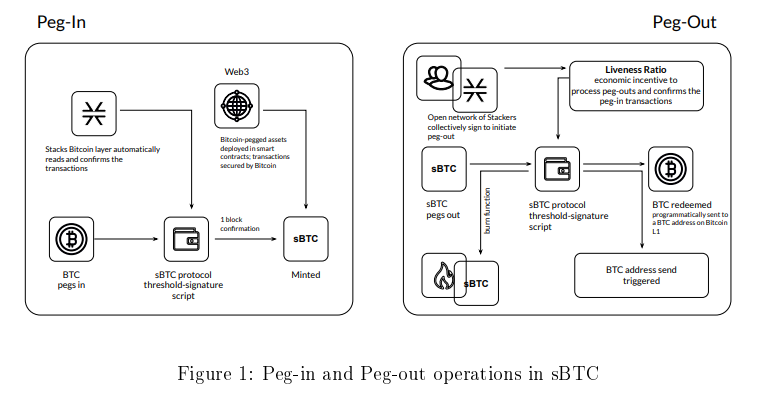- Stacks published a white paper introducing sBTC, which can make BTC fully programmable.
- sBTC is pegged 1:1 with BTC.
- This side chain could introduce smart contracts on the Bitcoin network.
Bitcoin, the world’s most popular cryptocurrency, is yet to prove itself as a revolutionary application that could boost its use case. Due to its rudimentary programming, it isn’t easy to induce smart contracts directly. However, a project called Stacks published a white paper showing that their new digital asset, Stacks Bitcoin(sBTC), could be used to make BTC programmable.
A simpler scripting language limits Bitcoin developers from creating new and revolutionary things on the platform. Stacks, an existing smart contract platform, wish to break this barrier by introducing a new digital asset derived from bitcoin called sBTC, which is pegged 1:1 with Bitcoin. This could be used to develop smart contracts on Stacks and easily converted back to BTC.
The white paper states that,
“Bitcoin is, by design, relatively slow and does not natively provide full-expressive smart contracts needed to build sophisticated applications. Faster and more sophisticated applications must therefore be built outside of the base layer. Bitcoin layers enable this.”
The term layers acts as a slang/lingo for any system outside the BBitcoin’s base layer, for example, sidechain, a secondary blockchain that interacts with the primary blockchain. Per the white paper, Stacks is powered by sBTC and STX and acts as a Bitcoin sidechain.
Although the concept is still in its implementation phase and would be formalized under Stacks Improvement Proposal (SIP) 21, and could come into existence eight to nine months from now, says Muneed Ali, Stacks co-founder.
Working of sBTC
The current Stacks protocol employs a consensus mechanism called “Proof-of-Transfer,” allowing anyone to become a stacker or miner. Miners then go on to earn STX rewards for mining Stacks blocks. But they ought to first post BTC to earn mining privileges.
Bitcoin is then distributed subsequently rewarding stackers who maintained a copy of Stacks Ledger; STX should also be locked for a certain period to receive stacking privileges.

Pegging In
In a process called Pegging in, used in the sBTC peg system, users send regular BTC to a wallet controlled by stackers. This action, in turn, mints the corresponding number of sBTC, which can then be used in Stacks smart contracts.
Pegging Out
The process of Pegging out is employed to get those BTCs back; users return sBTC to the wallets, Stackers then sign these peg-out requests and finally release the equivalent amount of BTC back to the user.
sBTC is burned in these corresponding processes.
Ali says “It is a fully trustless system, it is a protocol. There is a dynamic set of signers who have economic incentives to be signers and they sign the peg transactions.”
Previous Sidechains
Blockstream published a white paper on side chains in 2014. Since then, there have been many developments in this field; layer 2 Labs are about to bring “drive chains,” and BTC developer Ruben Somsen seems to be working on “space chains.”

Andrew is a blockchain developer who developed his interest in cryptocurrencies while pursuing his post-graduation major in blockchain development. He is a keen observer of details and shares his passion for writing, along with coding. His backend knowledge about blockchain helps him give a unique perspective to his writing skills, and a reliable craft at explaining the concepts such as blockchain programming, languages and token minting. He also frequently shares technical details and performance indicators of ICOs and IDOs.


 Home
Home News
News






